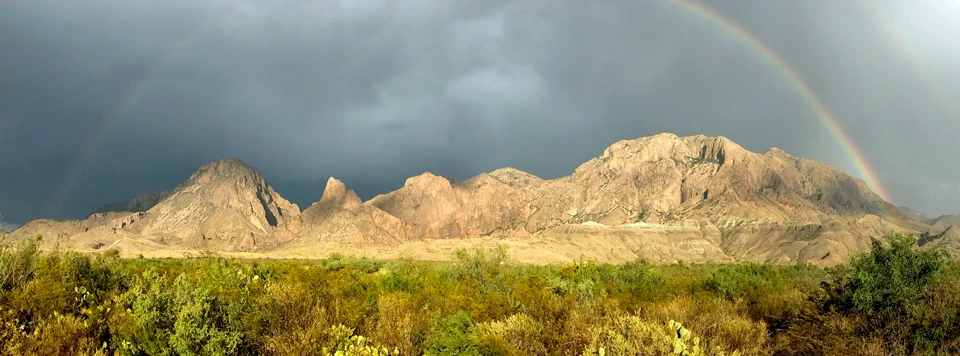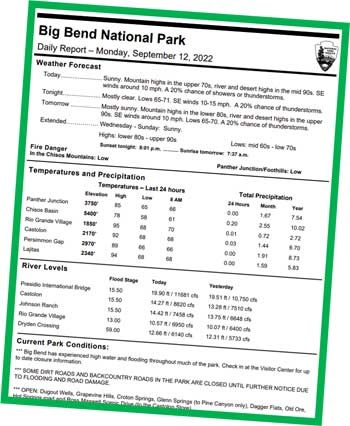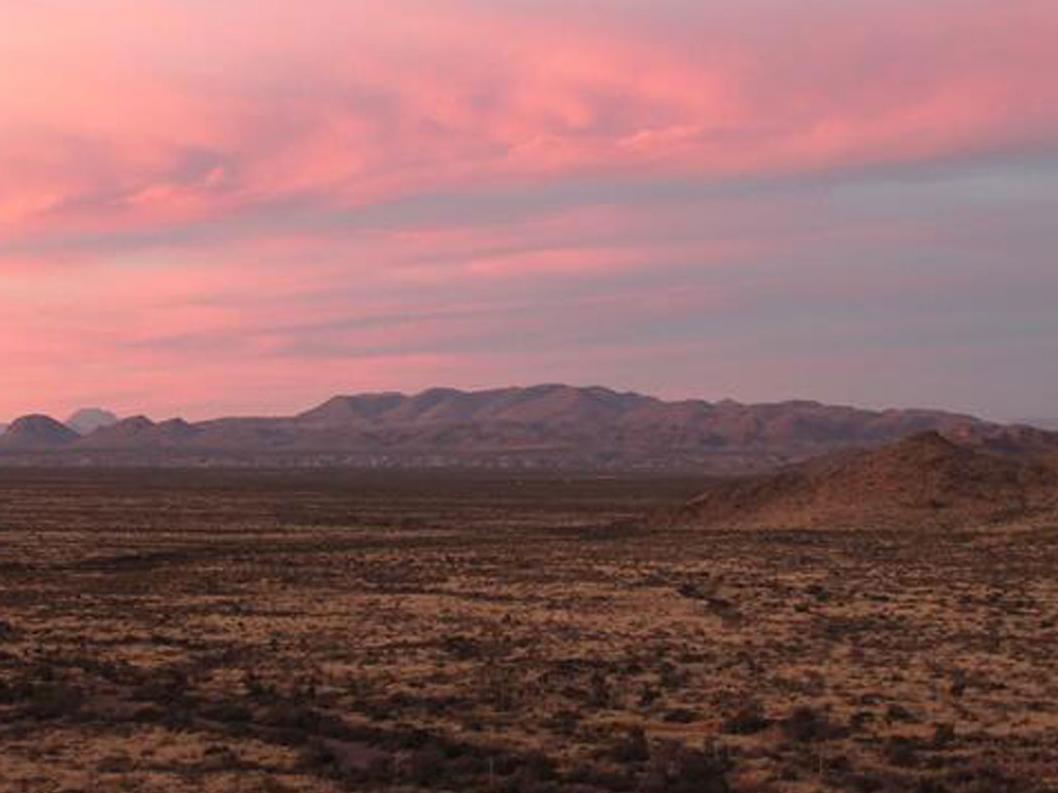
Current Conditions:Regional Weather Forecasts
Park Alerts!
Park Weather Station Data
BEAT THE HEAT!Learn how to plan, pack, and recreate during the heat of Big Bend summers.
River Level Observations
Live Weather and Air Quality DataRecorded at the K-Bar monitoring site (near Panther Junction)Webcam
Live View From Panther JunctionBig Bend is famous for wide expansive panoramas. The view from Park Headquarters is always changing, and always spectacular. The view is to the Northwest, and updated every 15 minutes. On a clear day, distant peaks over 80 miles away are clearly visible. Additional Information: NPS Air Quality Camera Webcam for Big Bend View WebcamAverage Temperatures & PrecipitationThe tables below reflect average readings at the three primary park areas recorded over the last 5 years.
Rio Grande VillageElevation 1,850'
Panther JunctionElevation 3,750'
Chisos BasinElevation 5,401'
Conditions Through the YearBig Bend is in the Chihuahuan Desert. Sunshine is abundant most of the year. Summer heat begins in May. It is extremely hot. Temperatures vary greatly between the desert floor, which is usually well above 100 degrees Fahrenheit by late morning, and the Chisos Mountains, which can be 10-15 degrees cooler. May through August are the hottest months. Visitors should be familiar with heat safety. Fall quickly melds into winter which is pleasantly mild and usually sunny, although periods of cloudy weather and freezing cold do occur. Snow is rare and generally light. Winter visitors must prepare for a variety of conditions. Elevation is EverythingImportant: Major weather forecasts for Big Bend National Park only list conditions at Park Headquarters/Panther Junction (elevation 3,750'). That is NOT typical for the majority of the park's area. Temperatures over the majority of the park desert and along the Rio Grande will always be 10 degrees hotter. Temps in the higher elevation Chisos Mountains average approximately 10 degrees cooler. Be prepared for this kind of variation during your trip. Dress for the WeatherNo matter the time of year, a wide-brimmed hat, comfortable clothing and sturdy walking shoes or boots are necessary for anyone planning to explore outdoors. Sunscreen is a must and hikers should always carry plenty of water; one gallon per person per day is recommended. Summer visitors should be aware of heat safety, such as wearing clothing that protects from the sun and avoiding activity during midday. Winter visitors should be prepared for any weather; temperatures vary from below freezing to above 80 degrees Fahrenheit . | |||||||||||||||||||||||||||||||||||||||||||||||||||||||||||||||||||||||||||||||||||||||||||||||||||||||||||||||||||||||||||||||||||||||||||||||||||||||||||||||||||||||||||||||||||||||||||||||||||
Last updated: December 23, 2025

